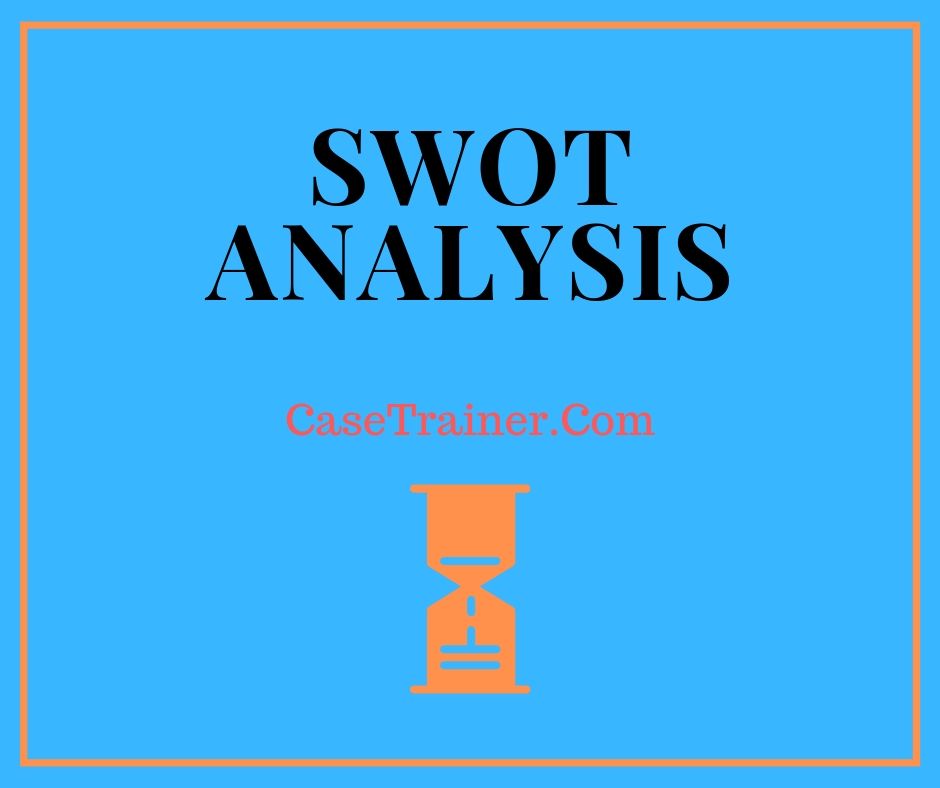Environmental Economics Case Study Solution and Analysis
Introduction
Environmental Economics Case Study Analysis is the largest publishing business with a highest market share in the China's book retail market. CMP supplies a variety of services consisting of; gathering details, processing information and communication services. Significant company sectors of the company consist of; books, regulars, consultancy and circulation. The company has a large item portfolio and its significant products consist of books, regulars, online media, exhibitions, research study reports etc. Environmental Economics Case Study Help has actually ended up being a specialized info company and a large detailed Science and Technology publishing business through the integration of print media, audio-visual media and the network media.
Vital Problems
Although, Environmental Economics Case Study Analysis has actually spent its 60 years journey efficiently, being a successful publishing house, however, the altering macro market patterns and forces bring certain difficulties to the publishing industry in general and CMP in specific. These aspects consist of;
• Entrance of the new publishing firms in the market.
• Declining development of the publishing market.
• Market saturation.
• Intro of digital publishing techniques
• Enhancement of science and technology.

The transformation of the macro markets have raised several concerns to the management at CPM that what could be the future of CMP in this situation? Do the long valuable experience, technical resources and the capabilities of the company could be utilized to pursue the future advancement unceasingly? How could the business sustain its long term competitive position in future?
Situational Analysis
Internal Analysis
SWOT Analysis
Strengths
Environmental Economics Case Study Solution has particular strengths that can be used to minimize the risks, conquer the weak point and obtain the chances. Strengths of CMP are provided as follows;
• The long term experience of Environmental Economics Case Study Solution in the publishing market i.e. 60 years allows the company to provide high quality items at a lower expense using its previous experiences.
• The technical resources and abilities generated by its effective journey offer a competitive advantage to CMP.
• Large item portfolioof CMP helps it to diversify its risk and supply high worth to its customers.
• Strong financial position permits the business to consider a number of development opportunities with no worry of raising fund externally.
Weak points
Along with the strengths, the business has particular weaknesses which could increase restraints for the business in implementing its advancement program. The weak points of Environmental Economics Case Study Analysis are provided as follows;
• Despite of being a science and innovation publishing company, the company still has traditional methods ofpublishing which are not suitable with the growing technological shift.
• CMP extremely relies over the Chinese markets for its development. It must propose specific expansion strategies to prevent its reliance over the Chinese markets to achieve long term development.

Opportunities
The development of the publishing market is declining since 2008, affecting Environmental Economics Case Study Solution as well, but the development could be revived by availing particular opportunities presented in the market. The market opportunities for CMP include;
• The company might also present Digital Publishing by utilizing its long term technical experience and a strong client acknowledgment in the market.
• CMP could think about a development program through the expansion towards foreign markets in order to lower its dependence over Chinese markets by utilizing its large financial resources.
Threats
The altering macro trends in the market and increasing competitors in the publishing industry has actually postured specific risks to Environmental Economics Case Study Help including;( Gurel, 2017).
• Intro of digital publishing i.e. virtual libraries might result in decreasing market share of Environmental Economics Case Study Help due to the consumer shift towards digital libraries.
• The existence of large number of rivals in the publishing market increase the threat for CMP to lose its competitive position in the market, as competitors can acquire a strong customer base by utilizing specific techniques like aggressive promotion, quality items, etc.
• Entryway of brand-new publishing firms in the industry together with existence of high competitors increases the threat of losing the customer base.
Financial Analysis.

Due to absence of data, the monetary ratios of CMP might not be determined. It could be analyzed from the Appendix III that the yearly total profits of Environmental Economics Case Study Analysis throughout the duration 2000-2012 are growing at a high growth rate, showing that the annual demand of the products of CMP is growing and the company is quite effective in bring in a big number of customers at a possible price.
Along with it, the 2nd chart which shows the annual development in the Environmental Economics Case Study Solution overall assets, reveals that the company is quite efficient in adding value to its possessions through its incomes. The growth in possessions reveals that the overall worth of the company is likewise increasing with increasing the total incomes. (Unidentified, 2013).
Another financial analysis of the company using the provided information might be the analysis regarding the circulation of total earnings of the business. Huge part of the incomes of CMP originates from the sales of its published books i.e. 64% as shown in the Case Appendix V. The business could move towards other business sections with a potential development to accomplish its future advancement objective.
PESTEL Analysis
PESTEL analysis might be performed to learn the various external forces affecting the efficiency of the business and the recent patterns in the external environment of the company. A quick PESTEL analysis of the company is provided as follows; (Alanzi, 2018).
Political.
As the publishing sector might have a substantial influence on the mindset of the people about the communist ideology of the government, for that reason, the publishing sector is highly supervised and directed by the Promotion Department of the Communist Celebration of China. It could be stated that the total political forces affecting CMP business are high. The government policies concerning the publishing sector are likewise increasing with the passage of time.
Affordable.
Economic forces impacting the publishing sector in basic and the CMP in specific includesthe rates of paper, the income level of consumers, the inflation rate, and the total GDP development of the country. All these forces combine effect the demand for the publishing market.
Social and Demographical.
The customer choices are shifting towards digital publishing rather than the conventional was of publishing. In this regard, CMP needs to focus on digital publishing to meet the changing customer choices.
Technological.
Technological forces affecting the CMP consist of the technological improvement in the reading methods etc. Improvement of science and innovation together with the increase of digital publishing could minimize the demand for the CMP items, if certain actions would not be taken soon.
Environmental.

Ecological forces impacting Environmental Economics Case Study Solution consists of the issues of environmental communities over the use of paper in publishing books. The paper used in the books while publishing is required to be disposable and the ink utilized while publishing needs to not be damaging for the environment.
Legal.
Legal guidelines for the publishing sector at whole are high. Publishing Ordinance 1997 requires the publishers to be authorized first by the Federal government to be entered in the publishing market.
Industry Analysis (Porter's Five Forces Model).
Porter's 5 Forces Model could be utilized to analyze the attractiveness of the publishing industry China. A short analysis of the Porter's Five Forces is offered as follows;.
Risk of New Entrants.
Hazards of brand-new entrants in the Chinese Publishing Industry is moderate. The potential growth in the market tends to attract brand-new entrants to the publishing industry. The existence of extreme competitors and the requirement of big capital tends to demotivate brand-new entrants to enter in the market.
Danger of Replacement.
Threat of Substitution is high for the Chinese Publishing Industry. The substitute products for the released documents is the files provided in the virtual libraries on certain sites. The altering consumer preferences towards digital knowing increase the threat of alternative for the market.
Competitive Competition.
Competitive competition in the publishing industry is high. The presence of large number of customers in the Chinese Publishing Industry like CIP, PTP and so on tends to produce high competitive rivalry for CMP. Along with it, new entrants are likewise participating in the marketplace increasing the competitors for CMP.
Bargaining Power of Provider.
The major providers of the Environmental Economics Case Study Solution include the providers of the paper for releasing documents. As CMP is the biggest publisher in the Chinese Publishing Market, therefore the total bargaining power of provider for CMP is low.
Bargaining Power of Purchaser.
Haggling power of purchaser in the publishing market is high. Due to the presence of a a great deal of publishers in the Chinese market and the marketplace saturation, the purchasers requires high quality documents at competitive prices.
Rivals Analysis.
CMP runs in an extremely competitive market with the existence of large number of competitors. Nevertheless, the business has a competitive position in the market with the highest market share in the Chinese publishing market. Major rivals of Environmental Economics Case Study Help consist of;.
• Chemical Market Press (CIP).
• Posts and telecommunication Press (PTP).
Chemical Market Press (CIP).
CIPis one of the close rivals of CMP. Established in the same duration, CIP publishes similar type of books. For a big period, CIP held the largest market share, and still ranks third and 2nd in various market segments, with a major focus on academic publications. CIP functions as a threat for CMP as it could wean its market share due to its long term competitive background. CIP is focused on digital publishing and could wean the market share of Environmental Economics Case Study Analysis quickly in the present market circumstance.
Posts and telecommunication Press (PTP).
Another close competitor of CMP is PTP. It was also established in the same period as CMP and CIP. It ranks sixth in the state-owned publishers in regards to business scale. It is also among the prominent gamers in the publishing market with a yearly overall incomes of RMB 550 million in 2010.
Alternatives
Alternative-1: Expand towards New Markets
Pros
• Decreasing dependence over the Chinese markets.
• Increasing number of Consumers
• Growth chances.
• Avoiding the effect of market saturation in the Chinese publishing market.
Cons

• Usage of potential resources in growth.
• Threat of failure in brand-new markets.
• Time consuming.
Alernative-2: Present Digital Publishing
Pros
• Sustaining consumer base.
• Approaching new markets.
• Easy to introduce using current capabilities.
• Low danger of Failure.
• Low requirement for funds.
• Increased item portfolio provides high value to consumers.
Cons
• Competition in the market by CIP, who has prior focus on the digital publishing.
• Shift of focus from the core company segments to the brand-new one can lead the company to lose demand of its products in the market.
Suggestions
With the deep analysis of the external and internal environment of the company in addition to the industry analysis and the rival analysis, Alternative 2 is advised to CMP to achieve its future development. As the preferences are moving towards digital publishing and the business require an instant service to prevent the declining industry development. Intro of digital publishing might prove to be an immediate solution with low quantity of risk for the business. The business could also consider the expansion program after the success of its digital publishing program.
Application
In order to present digital publishing in its item portfolio, the company should first gathers the information connected to the consumer need, the possible markets, the federal government policies and the information related to the rivals presented in the market. After that, the company must choose one potential sector for its initial offering. It should gather research study that how it could differentiate its digital publishing from the existing competitors' items. After all the actions above the business need to choose the preliminary offering. The company needs to go for the other markets if the preliminary offering shows a success. In this way the company would be able to execute its digital publishing program.
Conclusion
The growth of the publishing industry is declining because 2008, showing a risk to the business's long term existence, however the circumstance can be managed by considering a development plan in the future. The company might consider introducing digital publishingin its existing market to implement its development program at immediate basis and to avoid the danger of failure for entryway in the brand-new markets.

